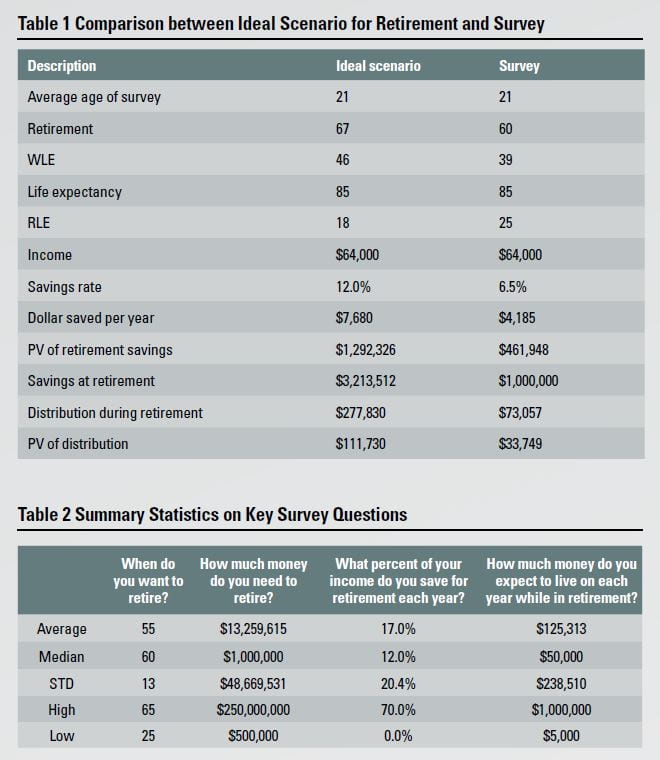Dave Donahoo, CFA
Board Member & Vice President, CFA Society Baltimore
We must start teaching financial literacy to children at young ages. This could make a big difference in the financial wellness of future generations.
Data shows that 59% to 78% of Americans are living paycheck to paycheck. That’s consistent with another scary statistic: Only about 41% of Americans have enough savings to handle a $1,000 emergency. In other words, essential but unexpected car or home repairs could push more than half of our fellow citizens into debt.
While many factors contribute to starkly different finan- cial situations for Americans, the purpose of this article is to focus on financial literacy. Financial literacy can be a potentially powerful remedy for the lack of finan- cial wellness reflected in the troubling statistics noted above. If Americans are not taught personal finance best practices, they are more likely to make poor financial choices. This can have long-run, generational effects.
Academic research, such as Divya Sridhar’s “Financial Literacy Is More Important Now than Ever,” tells us that to have the greatest impact, we should focus more on financial literacy than we have in the past. It also shows that children learn (or do not learn) about money and personal finance from their parents, which means that every parent has a responsibility to help their children learn about personal finance. Unfortu- nately, not all parents are adequately prepared to take on this responsibility.
This article highlights the ages—which are younger than you think—at which different forms of financial education becomes appropriate, how our financial education needs to evolve with technology (for example, my children may never balance a checkbook), the status of financial education in K-12 schools, the role of non- profits, and, most importantly, what we can all do to improve financial education outcomes.
How Young Is Too Young?
You may have personal experience with financial educa- tion for children in the form of an allowance. Children are monetarily incentivized to do household chores. For example, if they take the trash out and help wash dishes,
$10/week goes into their piggy bank. While research is mixed on whether money should be tied to contribut- ing to family chores—to be sure, many children must step up in their households out of necessity, without a monetary reward—the research unequivocally says that we need to teach general financial education at a younger age than we think we should.
But children’s financial education shouldn’t start and end with an allowance. Experts suggest that as early as second grade, parents can introduce the concept of “need” versus “want.” (My three-year-old argues she “needs” M&Ms … we are working on that.) Need versus want—or spending now versus saving for later—is at the heart of financial education. It’s also a foundation for concepts like “emergency savings.”
In sixth to eighth grades, children learn about what Albert Einstein called the “eighth wonder of the world”: compounding interest. In the asset management industry, we often talk about the positive power of compound- ing returns. However, it also works in reverse. Proper debt management is key for American households to avoid the negative power of compounding. Debt can grow rapidly—much more rapidly than many Americans grasp.
High schoolers, armed with an understanding of the positives and negatives behind compounding, are then forced to grapple with their first big-ticket life choices: the three Cs of cars, colleges, and credit cards. A greater focus on such “real world” challenges could yield results.
If we accept that teaching our children financial educa- tion at a young age is essential, should we teach them what we learned?
Technology Has Changed Personal Finance
I walked into my home office this autumn on a mission to find my checkbook. After finding it, I was embar- rassed to explain to our contractor that I had run out of checks. A Venmo transaction later, I went online and ordered a sleeve of checks from my banking institution. Checks were offered in groups of 10, 25, or 50. I opted for 25 checks, knowing they will last me a few years.
Technology has changed personal finance profoundly over the last 30 years, but we have not changed the way we teach personal finance. The rise of credit cards in the 1990s, combined with online shopping in the 2000s, has made it difficult for everyday Americans to truly understand their spending habits. The ability to buy by clicking an online “buy now” button on Amazon makes it tougher and tougher—even for adults—to see the difference between a “need” and a “want.” And, without the example of mom and dad balancing a paper checkbook, kids have even less insight into personal finances today. Today, online budgeting services such as Mint serve as a virtual checkbook or ledger. The way that we teach personal finance needs to change to reflect these changes.
Lack of Preparedness at the K-12 Level
K-12 schools have long struggled with how to address financial education, although they recognize its impor- tance. The lack of financial education for K-12 students isn’t malicious. Rather, it’s because many teachers lack the confidence to provide financial education—either because they grew up in families where it was taboo to talk about money or because they felt inadequately prepared to position themselves as experts.
Luckily, with greater awareness of the need to teach financial literacy at the K-12 level has come efforts to bring about change. We are seeing more and more school districts adopt some form of financial education training for their students. In the past decade, legislative efforts to improve financial literacy have accelerated. As of the 2018 legislative session, thirty states have passed legislation addressing K-12 financial literacy education.
However, the efforts to introduce financial education have had mixed results. Teachers historically have not received strong financial education training. Only one in five (20%) teachers felt competent to teach personal finance, according to Teachers’ Background and Capacity to Teach Personal Finance: Results of a National Study. In contrast, almost 90% of teachers believed there should be some form of required financial education course.
If we all agree that personal finance is an important topic, but K-12 teachers aren’t prepared to teach, where do we turn?
Role of Nonprofits
Over the past 30 years, many mission-oriented nonprof- its have focused on partnering—not competing—with our public schools to provide financial education to children. The CFA Society of Baltimore, of which I’m a member, has worked with several. To ensure the next generation of adults is better prepared for a $1,000 financial emergency than our current generation, we must find more ways to assist nonprofits in providing financial education to K-12 schools.
Some examples of successful programs include Junior Achievement, a national nonprofit focused on K-12 education that develops and administers in-classroom financial education through a network of volunteers. The United Way has a similar program. John Hopkins School of Education has developed Stocks in The Future, a financial literacy program that reinforces math, lan- guage arts, and social studies here in Baltimore.
While financial education is needed across all races and genders, research shows young girls suffer from significantly higher confidence gaps related to finances. The Invest In Girls financial literacy program, which says only 12% of girls feel financially confident, has as its mission to change that statistic.
Like nonprofits, many corporations, especially in the financial services sector, have begun to develop financial wellness programs for their employees, including pro- grams around the topic of how parents can talk with their children about money. My firm, T. Rowe Price, is one of many that have developed content around this subject, partnering with Junior Achievement to deliver the Money Confident Kids financial literacy program.
How Can You Make A Difference?
Financial education is a lifelong journey, but the journey must start early. If you want to get involved, the orga- nizations I’ve mentioned are great places t lend your time and resources (find their websites in the “Refer- ences” section below).
The CFA Society of Baltimore recognizes the role we can, and must, play as financial services professionals beholden to the broader Baltimore community. In addition to our longstanding practice of engaging with college students who are pursuing careers in finance, we have begun to partner with many organizations, includ- ing those listed above, to put our collective financial expertise to use.
I hope this article serves as a starting point for all of us to better explore the importance of financial education and to think about ways to pass along our knowledge to future generations.
References
Invest in Girls, a financial literacy program. https://www.investgirls. org
Money Confident Kids, a financial literacy program. https://www. moneyconfidentkids.com
Morton, Heather, Ongoing Effort for Financial Literacy: National Conference of State Legislatures https://www.ncsl.org/ blog/2018/03/28/ongoing-efforts-for-financial-literacy.aspx
Sridhar, Divya, “Financial Literacy is More Important Now than Ever,” Medium.com https://medium.com/inspired-ideas-prek-12/ financial-literacy-is-more-important-now-than-ever-ad771fe450ae
Stocks in the Future, a financial literacy program. https://www. sifonline.org
Way, Wendy L., and Holden, Karen (2010). Teachers’ Background & Capacity to Teach Personal Finance: Results of a National Study, National Endowment for Financial Education. https://www.fdic. gov/about/comein/Mar3.pdf


